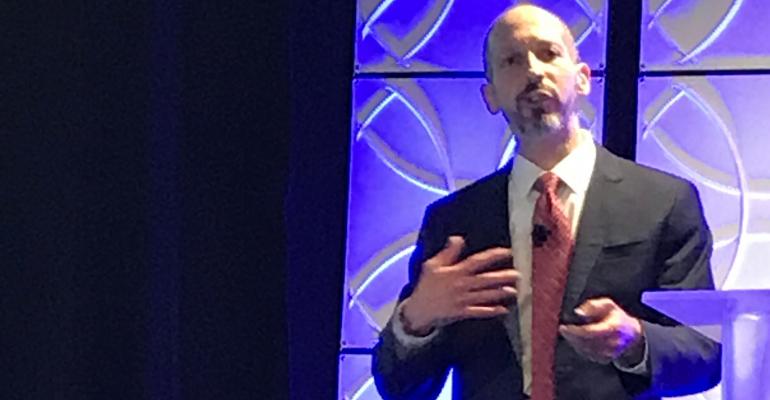Customer service is not the same thing as customer experience, and that was the first point that Jon Picoult, founder and principal at Watermark Consulting, drove home to the Financial & Insurance Conference Professionals Winter Symposium audience: While “customer service” is about assistance given to a customer, the broader term “customer experience” reflects every touchpoint a customer has when engaging with an organization. For a meeting attendee, that experience includes everything from the registration website, the airport arrival, and the meeting app, to the food service, lighting in the meeting room, and the line at the hotel check out.
For the FICP audience in Boston in January, Picoult drilled down on five principles for creating a great customer experience. He reminded attendees of the importance of managing the end-to-end experience and paying attention not just to the facts but also to how people feel.
Make it effortless. Consider the time that attendees need to invest to accomplish something with your organization. Online retailer Amazon, Picoult said, has raised the bar with its one-click ordering, creating an efficiency standard that is worth considering as you create your communication systems. Be clear from the start, answer questions before they’re asked, and be incredibly responsive.
Stir emotion. To be memorable, bring positive emotions into your customer experiences. Going back to the example of Amazon, Picoult said that company has come in at No. 1 on Harris Poll’s Reputation Quotient for five years in a row because it stirs two positive emotions for users: piece of mind (knowing when a package will arrive) and pleasure (avoiding a trip to a store). Ask yourself if you’re providing people with a feeling of confidence that you know what their needs are and that you’ll deliver.
Give people the perception of control. Humans can feel uncomfortable when they’re not in control, Picoult said. By setting clear expectations, you can give clients or attendees a feeling of control even though nothing has actually changed. He cited a study done on the mindset of people stuck waiting in lines. The people in one line were told how long the wait would be, those in the other line were left in the dark. Not surprisingly, the line with the clear expectation was less unhappy, but interestingly researchers also found that their perception of the wait time was shorter than it actually was. If you have an executive client who’s chomping at the bit to know the details of a meeting, a timeline of deliverables can provide the perception of control.
Be an advocate for the customer. Taking a “your problem is my problem” approach to client interactions is guaranteed to build loyalty.
Recover with style. Everybody makes mistakes, but how you bounce back is what's critical. “If you have a great recovery, you can create a more loyal customer than before the mistake,” Picoult said. He recounted a personal story of his wife’s evening gown, which was ruined when sent out to the laundry at a Ritz-Carlton before an event. The upshot was an over-the-top fix for the problem that involved not just being taken by limousine to buy a new dress, help from a personal shopper, and the general manager taking exceptional ownership of the problem, but a personal round of applause from the general manager and staff members before the gala that left Picoult and his wife feeling very special.





